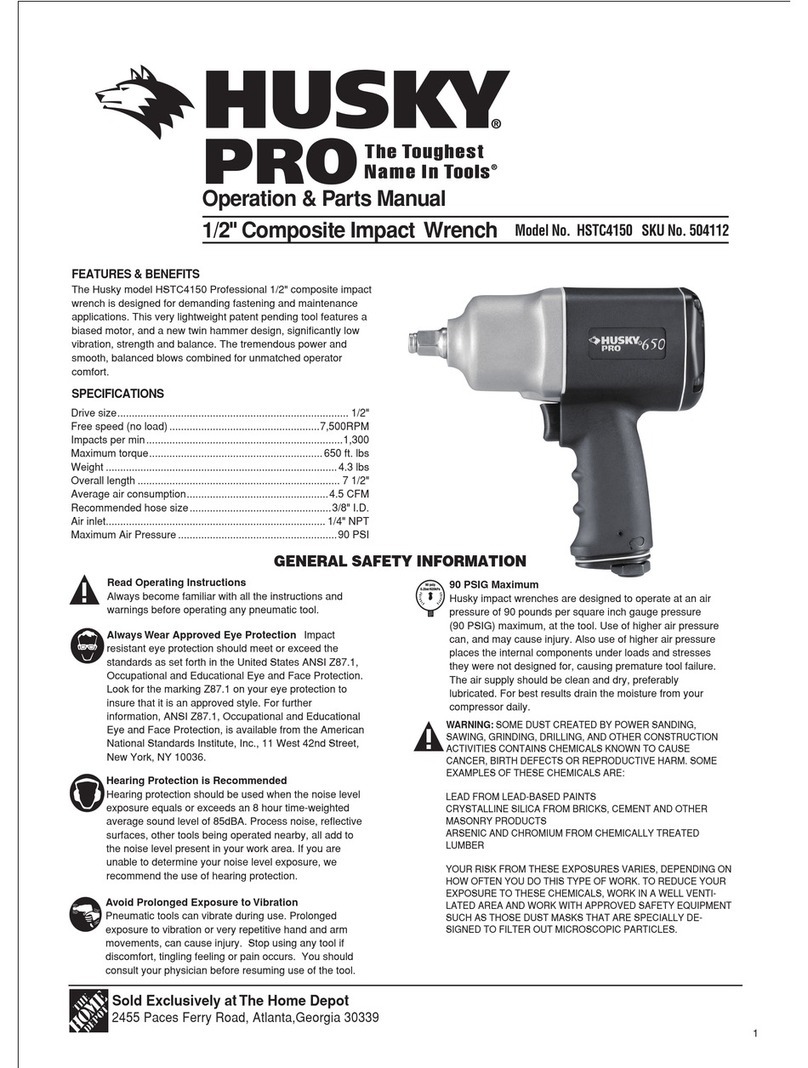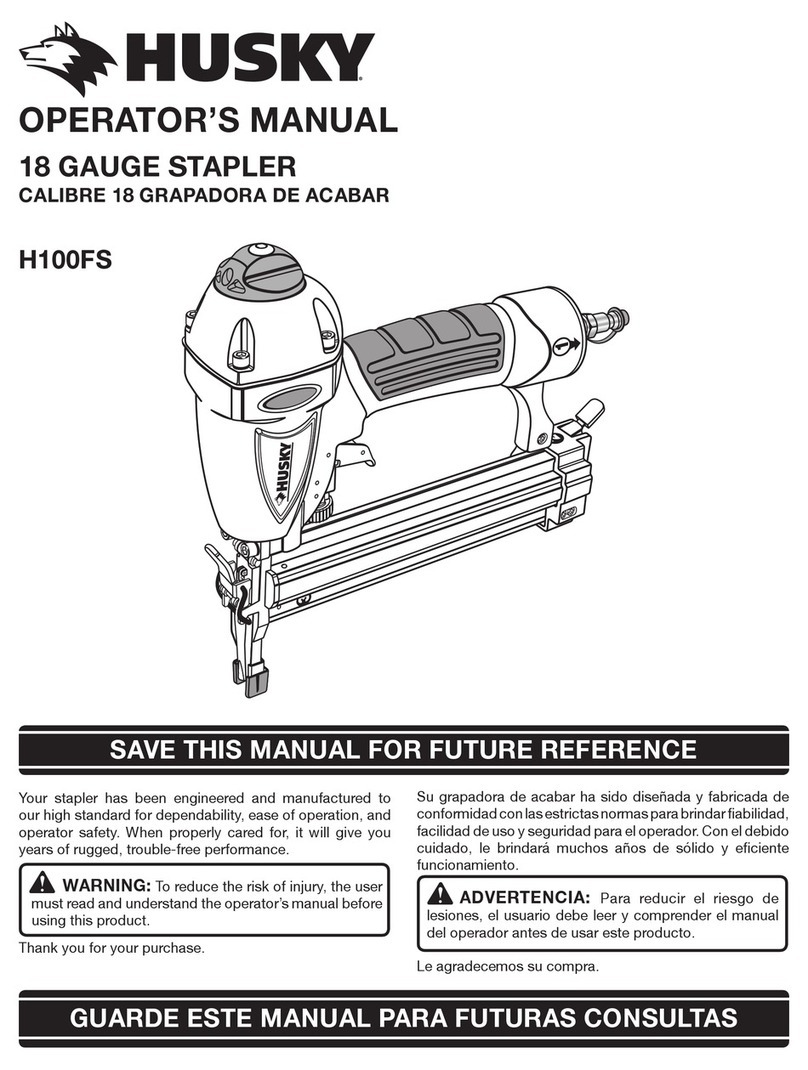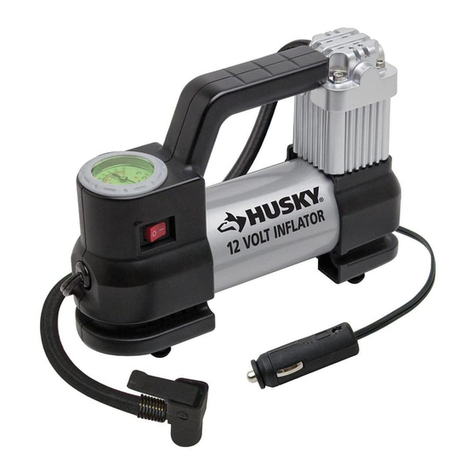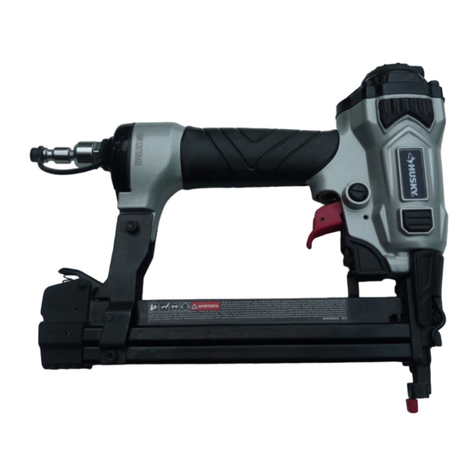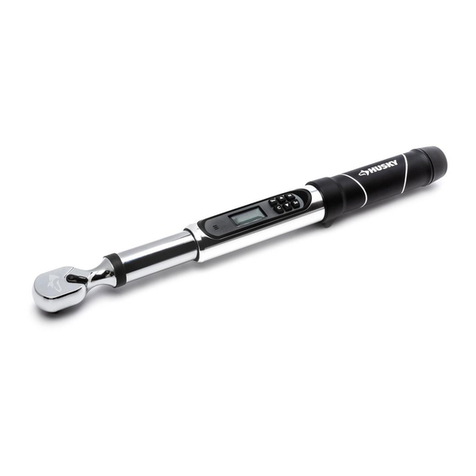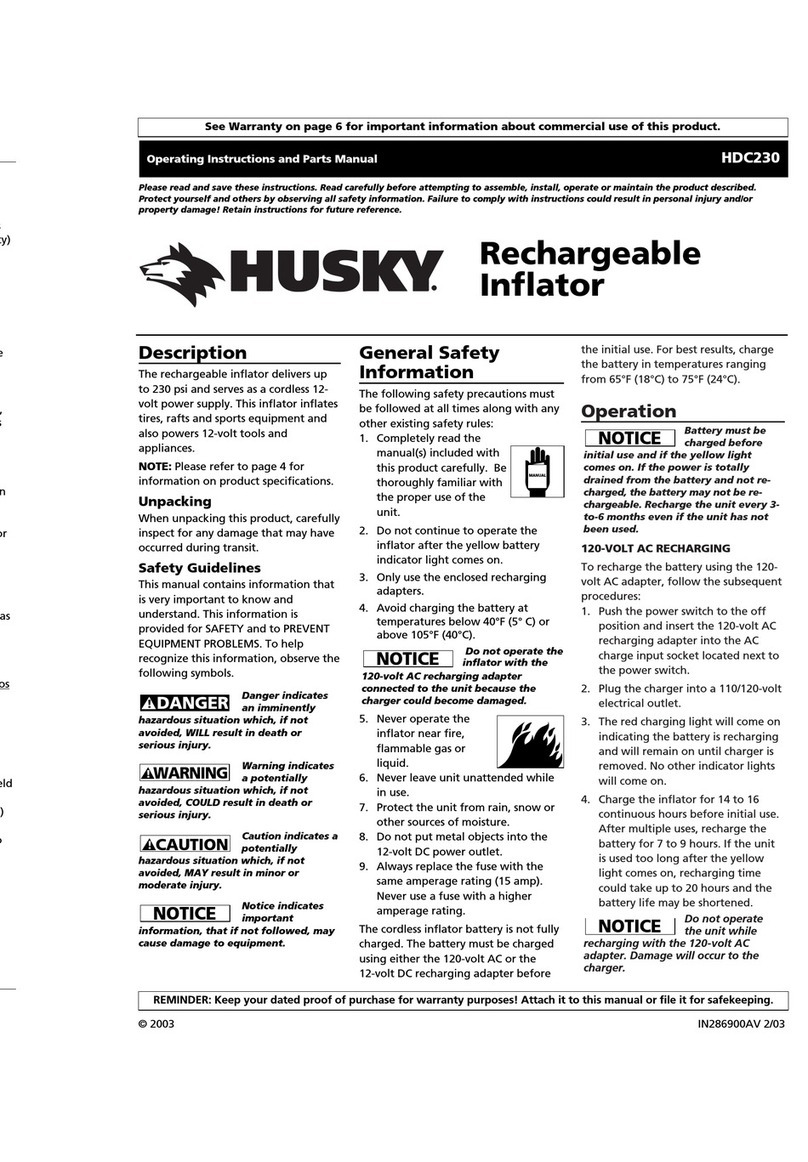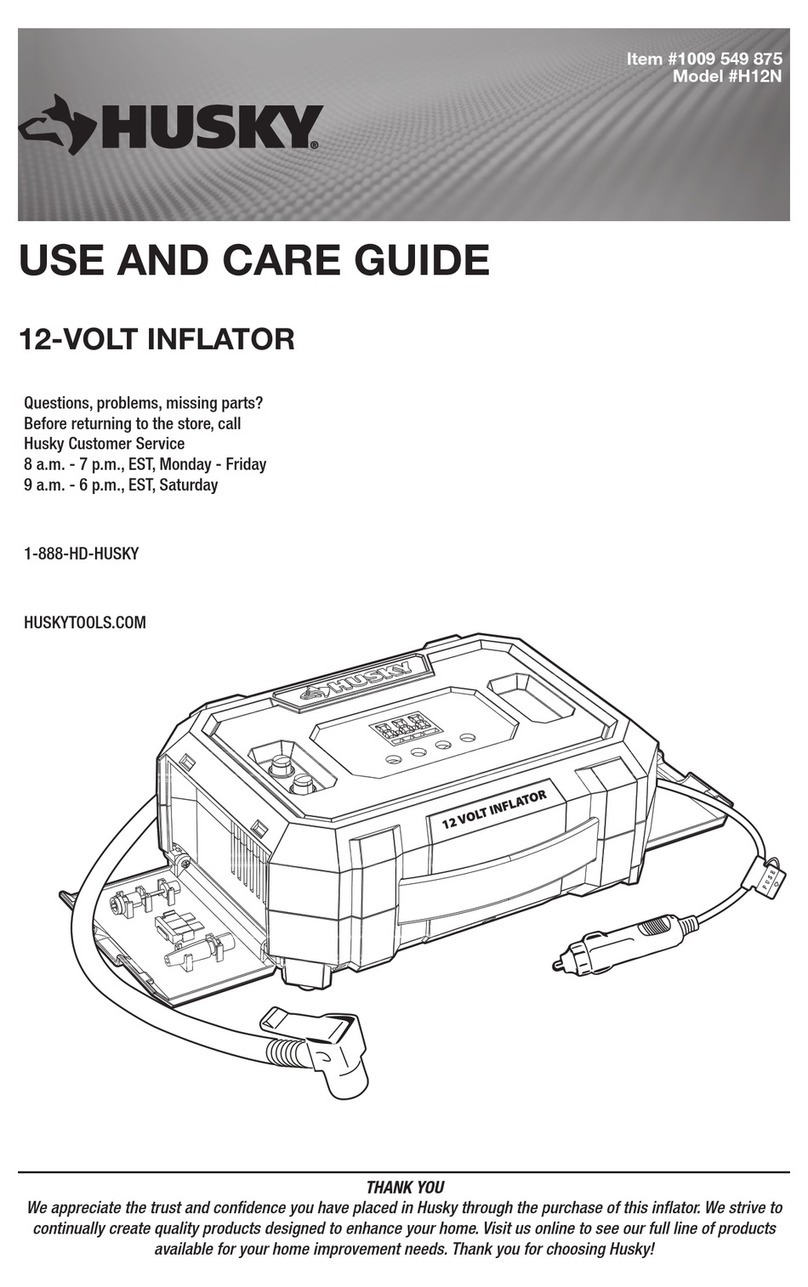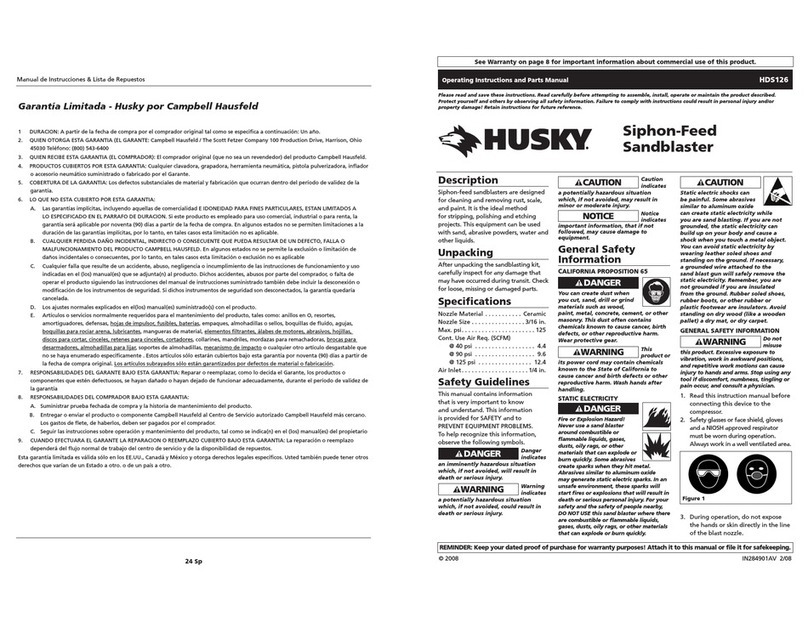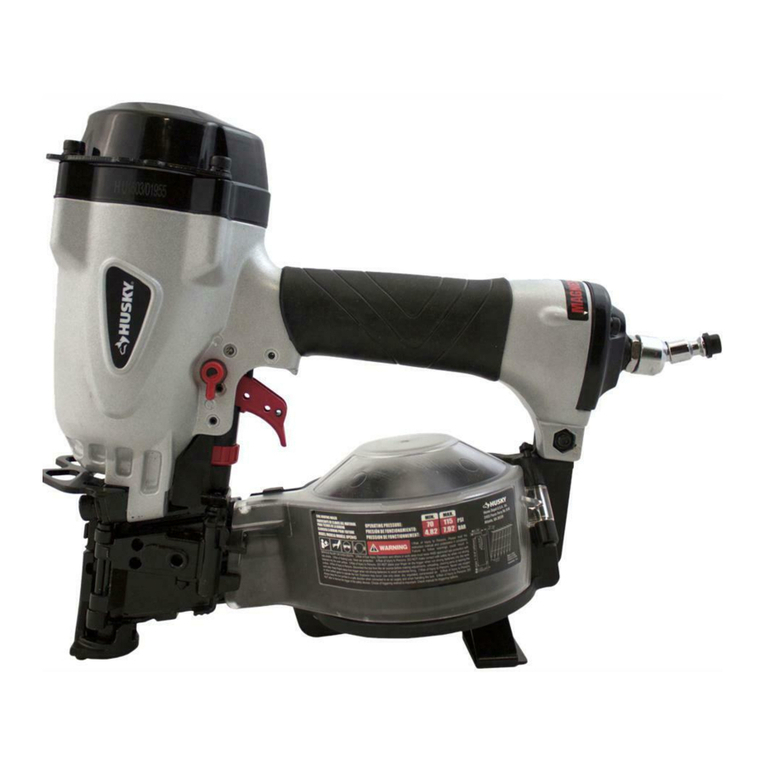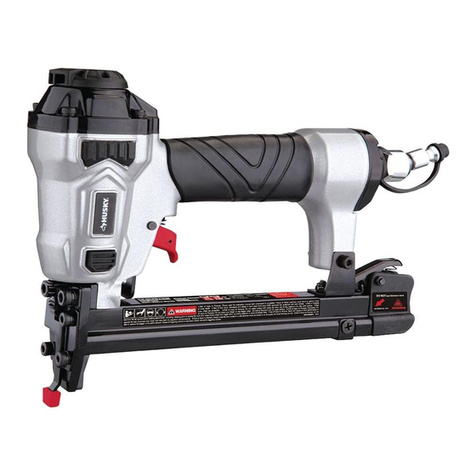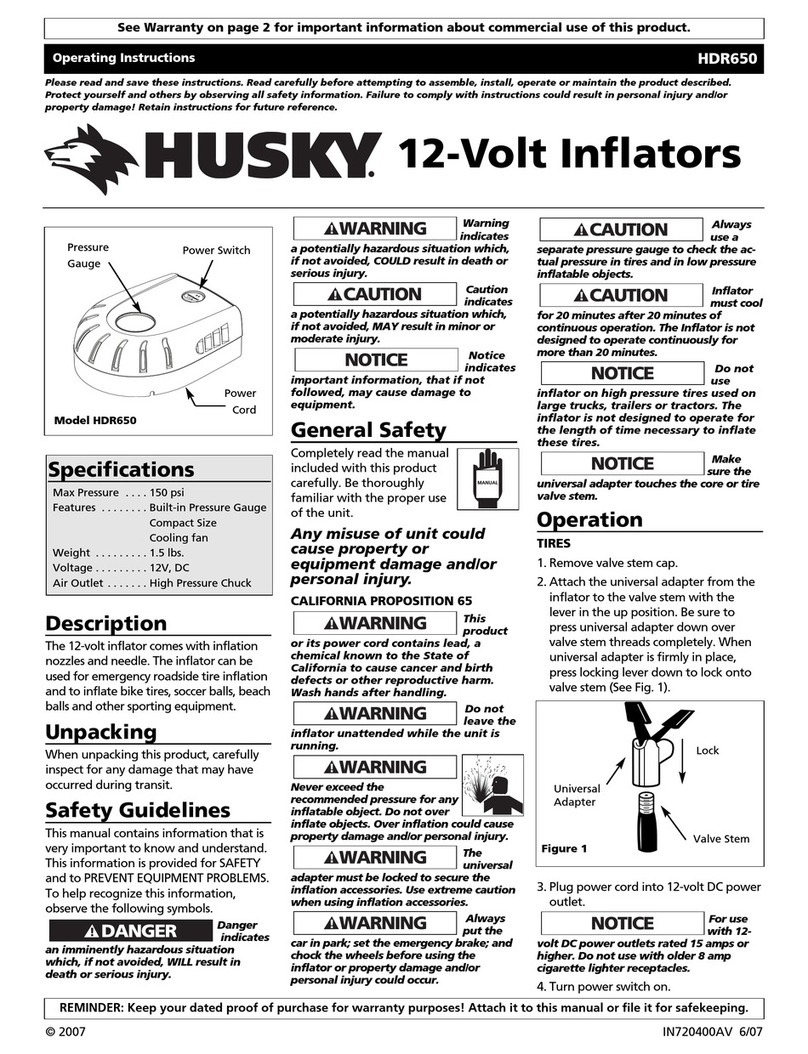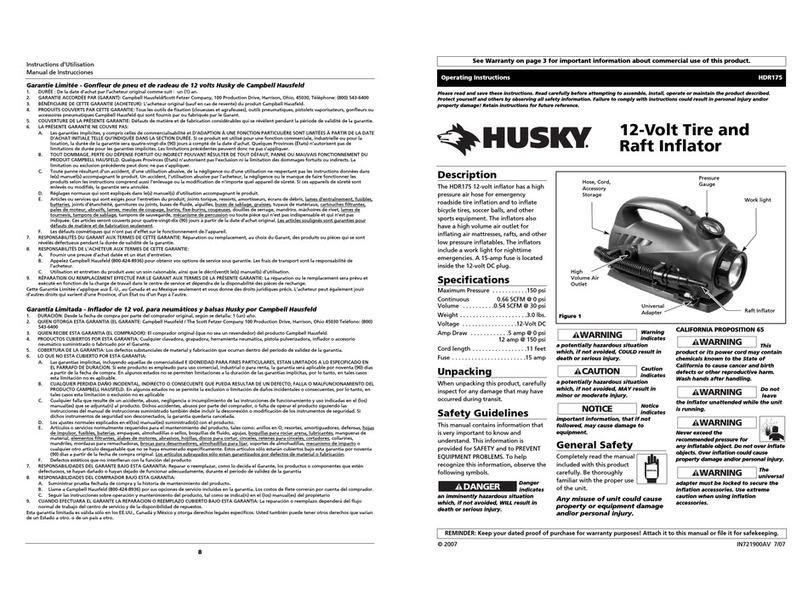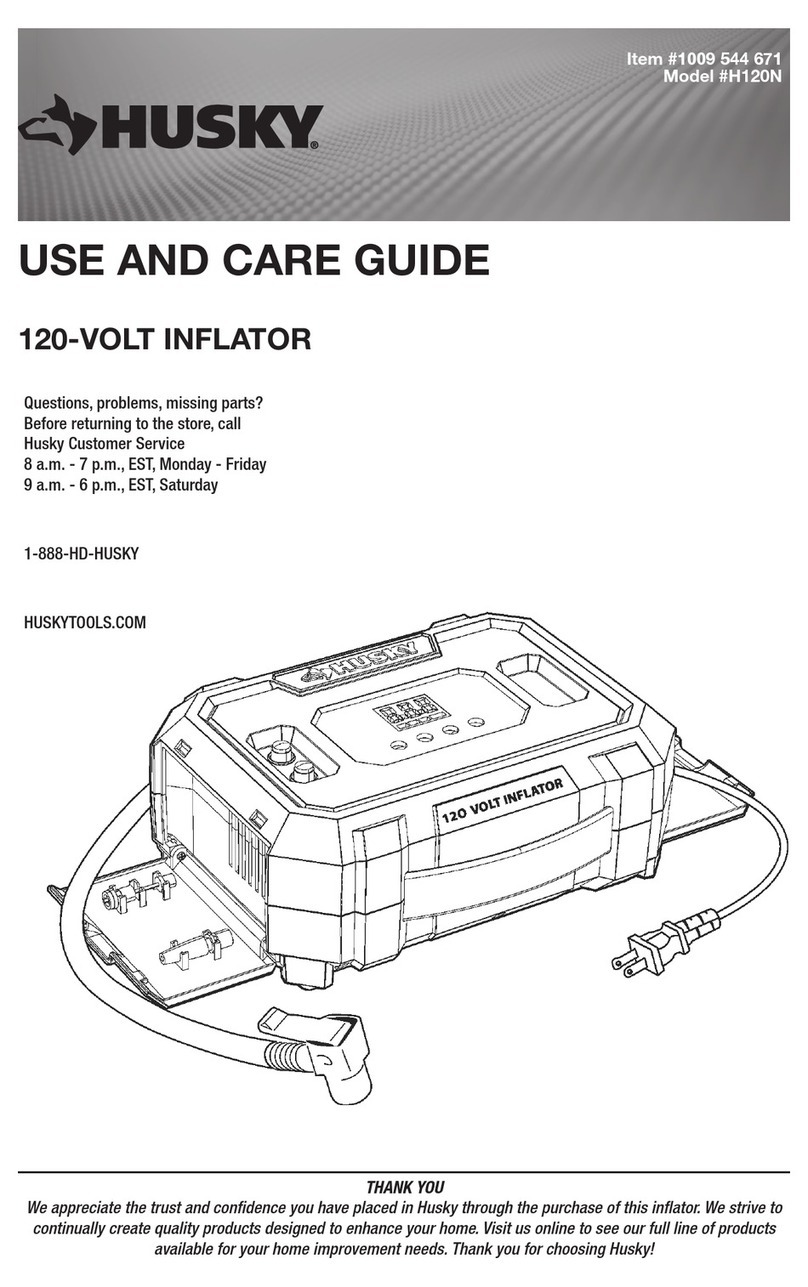
3 HUSKYTOOLS.COM
.ecnatsissarehtrufrofYKSUH-DH-888-1tcatnocesaelP
□Prevent unintentional starting. Ensure the
switch is in the off-position before connecting
to power source and/or BATTERY pack,
picking up or carrying the tool. Carrying power
tools with your nger on the switch or energising
power tools that have the switch on invites
accidents.
□Remove any adjusting key or wrench before
turning the power tool on. A wrench or a key
left attached to a rotating part of the power tool
may result in personal injury.
□Do not overreach. Keep proper footing and
balance at all times. This enables better control
of the power tool in unexpected situations.
□Dress properly. Do not wear loose clothing or
jewellery. Keep your hair, clothing and gloves
away from moving parts. Loose clothes,
jewellery or long hair can be caught in moving
parts.
□If devices are provided for the connection of
dust extraction and collection facilities,
ensure these are connected and properly
used. Use of dust collection can reduce dust-
related hazards.
□Do not let familiarity gained from frequent use
of tools allow you to become complacent and
ignore tool safety principles. A careless action
can cause severe injury within a fraction of a
second.
POWER TOOL USE AND CARE
□Do not force the power tool. Use the correct
power tool for your application. The correct
power tool will do the job better and safer at the
rate for which it was designed.
□Do not use power tool if the switch does not
turn it on and off. Any power tool that cannot be
controlled with the switch is dangerous and must
be repaired.
□Disconnect the plug from the power source
and/or remove the BATTERY pack, if
detachable, from the power tool before
making any adjustments, changing
accessories, or storing power tools. Such
preventive safety measures reduce the risk of
starting the power tool accidentally.
□Store idle power tools out of the reach of
children and do not allow persons unfamiliar
with the power tool or these instructions to
operate the power tool. Power tools are
dangerous in the hands of untrained users.
□Maintain power tools and accessories. Check
for misalignment or binding of moving parts,
breakage of parts and any other condition that
may affect the power tool’s operation. If
damaged, have the power tool repaired before
use. Many accidents are caused by poorly
maintained power tools.
□Keep cutting tools sharp and clean. Properly
maintained cutting tools with sharp cutting edges
are less likely to bind and are easier to control.
□Use the power tool, accessories and tool bits,
etc. in accordance with these instructions,
taking into account the working conditions
and the work to be performed. Use of the
power tool for operations different from those
intended could result in a hazardous situation.
□Keep handles and grasping surfaces dry, clean
and free from oil and grease. Slippery handles
and grasping surfaces do not allow for safe
handling and control of the tool in unexpected
situations.
BATTERY TOOL USE AND CARE
□Recharge only with the charger specified by
the manufacturer. A charger that is suitable for
one type of BATTERY pack may create a risk of
re when used with another BATTERY pack.
□Use power tools only with specifically
designated BATTERY packs. Use of any other
BATTERY packs may create a risk of injury and
re.
□When BATTERY pack is not in use, keep it
away from other metal objects, like paper
clips, coins, keys, nails, screws or other small
metal objects, that can make a connection
from one terminal to another. Shorting the
BATTERY terminals together may cause burns or
a re.
□Under abusive conditions, liquid may be
ejected from the BATTERY; avoid contact. If
contact accidentally occurs, flush with water.
If liquid contacts eyes, additionally seek
medical help. Liquid ejected from the BATTERY
may cause irritation or burns.
□Do not use a BATTERY pack or tool that is
damaged or modified. Damaged or modied
batteries may exhibit unpredictable behaviour
resulting in re, EXPLOSION or risk of injury.
□Do not expose a BATTERY pack or tool to fire
or excessive temperature. Exposure to re or
temperature above 130 °C may cause explosion.
□Follow all charging instructions and do not
charge the BATTERY pack or tool outside the
temperature range specified in the
instructions. Charging improperly or at
temperatures outside the specied range may
damage the BATTERY and increase the risk of
re.
